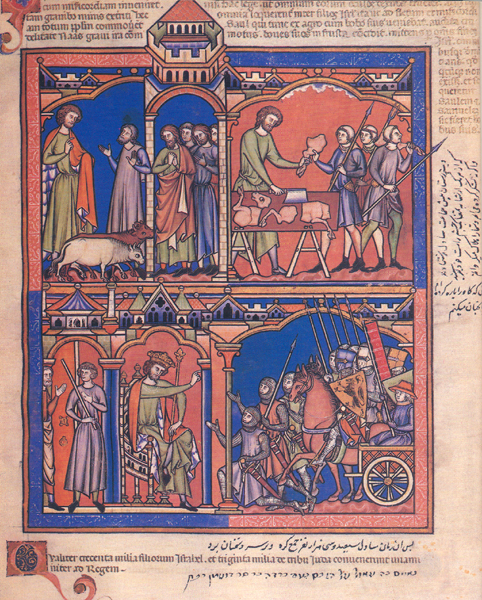Image Details

Courtesy The Pierpont Morgan Library
Messengers from Jabesh-Gilead greet Saul as he arrives from the fields, on this page from a medieval illuminated Bible, probably created by Parisian artists for a French monarch. Upon learning from the messengers that Jabesh-Gilead is under siege by the Ammonites, Saul rallies his people by distributing the dismembered remains of a yoke of oxen among the tribes of Israel.
Saul’s method, muster-by-dismemberment, recalls an earlier incident recounted in judges 19–21 that resulted in the Benjaminite civil war: A Levite and his concubine spend the night in the town of Gibeah (later the birthplace of Saul). Men from the town demand that the Levite be surrendered to them for homosexual rape; instead the Levite throws them his concubine, who is then raped and left for dead at the house stoop. Demanding retribution, the Levite cuts up her body and sends the parts among the tribes, who respond to his call to punish the Benjaminites. In the ensuing civil war, the tribe of Benjamin, Saul’s tribe, is nearly wiped out.
The biblical narrator, author Cohen argues, deliberately connects Saul’s assembling his troops with earlier events in which Benjaminites were the cause of so much destruction in the land of Israel. Thus Saul’s victorious campaign against the Ammonites, the act that supposedly confirms him as divinely chosen, ironically diminishes rather than exalts him.
